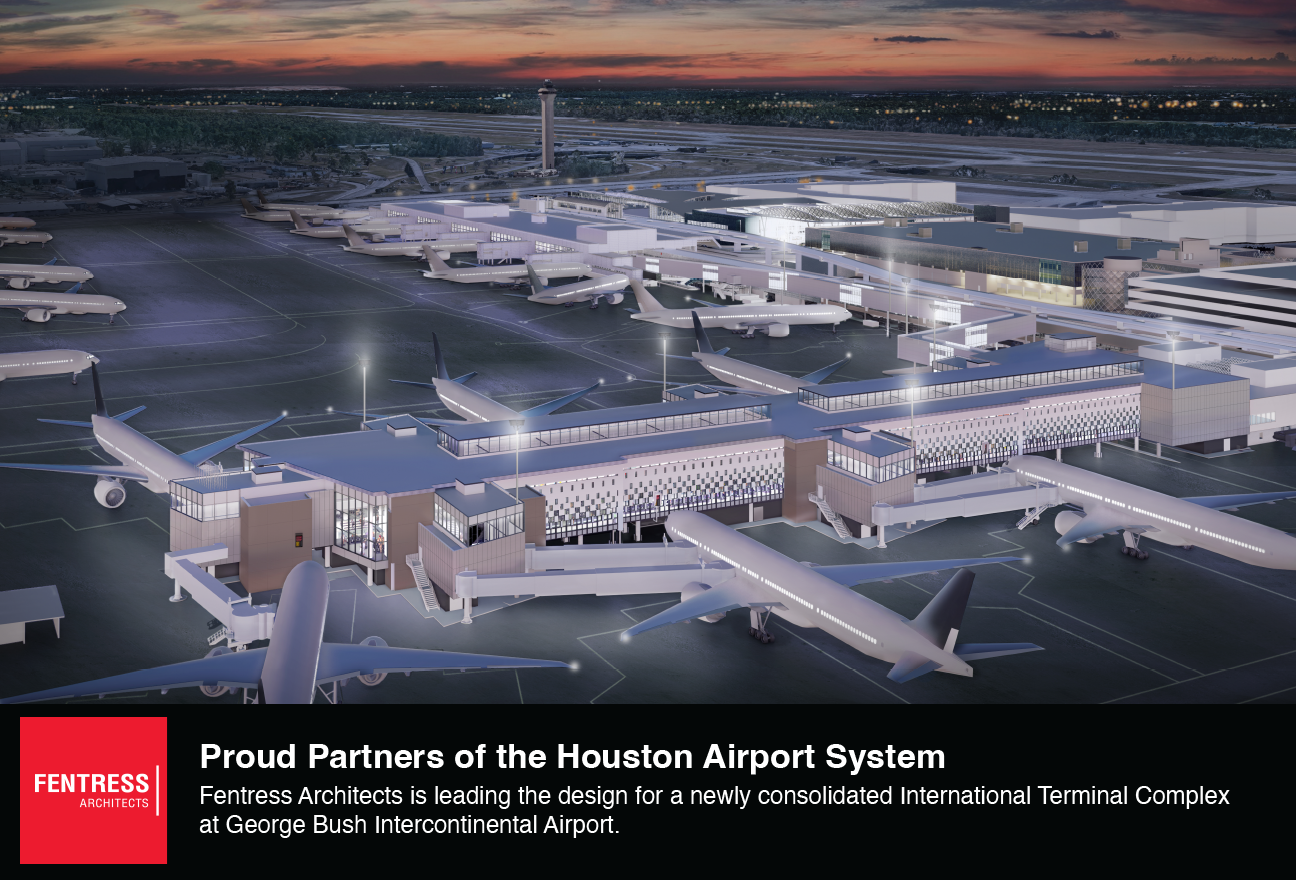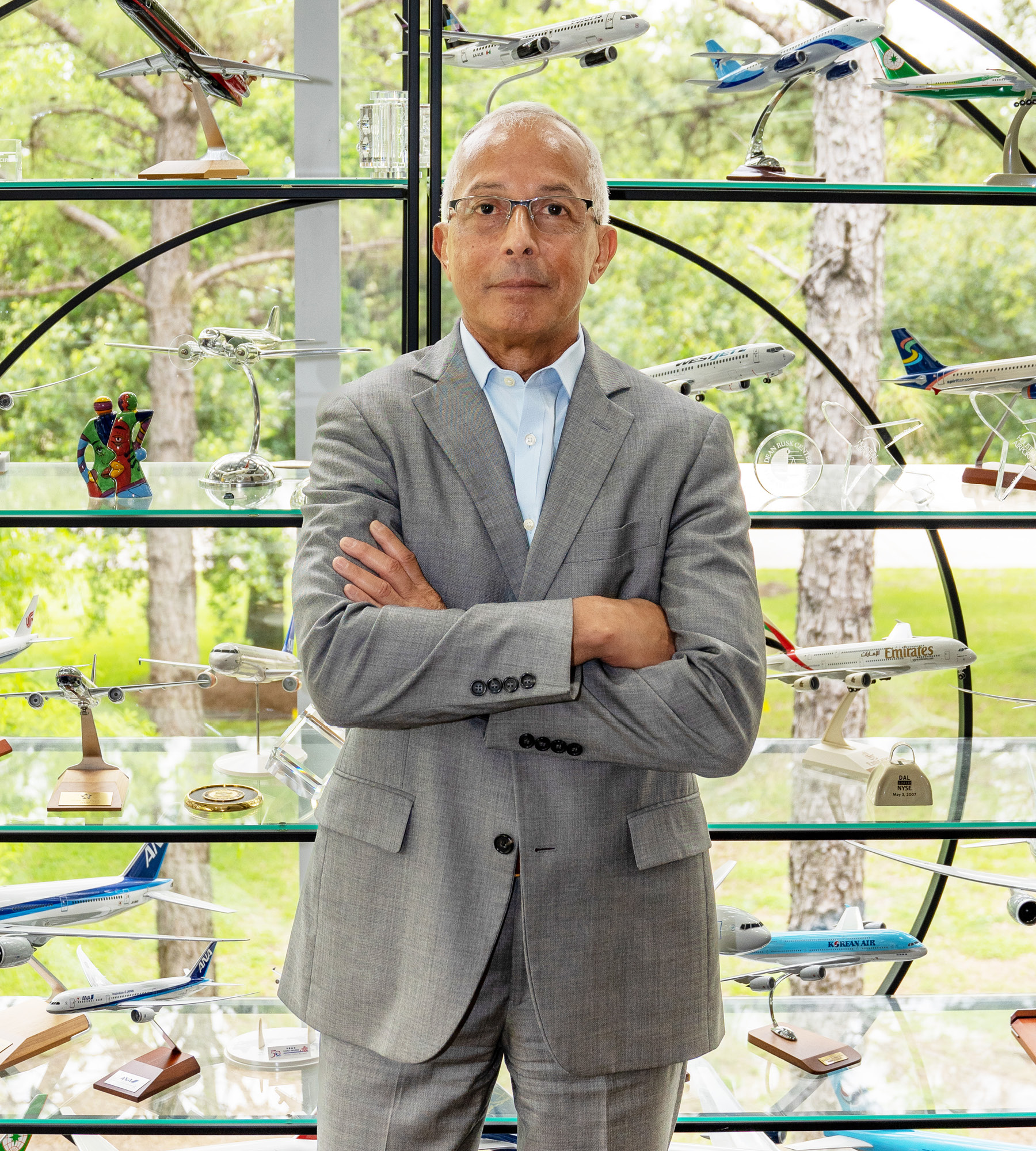Language
You can read the magazine in one of the following languages
Mario Diaz set an improbable goal upon becoming Executive Director of the Houston Airport System in 2011: achieving five-star status. It’s a rare distinction among global airports; just 18 have it today, and no United States airport boasted five stars at the time.
But Diaz had an epiphany while brainstorming on how to improve Houston Airports and obtain five-star status. Why not be unique and provide the best customer experience possible?
“There was a time when I thought about five stars and I said, ‘Wow, we can’t be Changi. We can’t be Incheon. Why even try?’” Diaz tells The CEO Magazine, referring to the highly rated airports serving Singapore and Seoul respectively.
“I realized that strategy is not about being the best. It’s about being unique,” he explains. “Let Changi be Changi. Let Incheon be Incheon. We can be Houston, and we can be five-star by meeting the needs and the wants and desires of the people of our region.”

“Events will overtake you if you don’t have a clear path that you can go back to when you settle all the day-to-day waves that will come at you from moment to moment.”
Diaz’s commitment to building on Houston’s strengths and idiosyncrasies, focusing on the passenger experience and emphasizing operational excellence has turned Houston’s passenger airports – William P. Hobby Airport and George Bush Intercontinental Airport – into top-rated facilities.
His insistence on setting and sticking with a strategy for Ellington Airport – the third facility in the Houston Airport System – has complemented the airfield with a successful spaceport for cutting-edge aerospace development and training.
Houston Airport System achieved Diaz’s initial goal of gaining five-star status in 2022. Hobby Airport became the first airport in North America to gain five stars in Skytrax World Airport Star Rating and is still the only one to have this rating in North America.
George Bush Airport – the bigger of the two international airports – has held four-star status for the past six years. It also ranked 36th among the World’s Top 100 list of airports, three places behind Hobby.
“I think that speaks to the consistency of what we’ve been able to do, not only in terms of the facilities … but it is the human element,” Diaz reflects. “It is the culture of the organization that has really made the difference. Our strategic priorities: make the passenger happy, build the platforms for future success, make our facilities opening day fresh and act responsibly to create social, environmental and economic sustainability.”
A native of New Jersey and a mathematician by training, Diaz developed a passion for aviation as a child. He caught the bug from his brother, who served in the Air Force and would send him manuals, Diaz recalls.
He later obtained a private pilot’s license and “got up to the point where I had an instrument rating and I could fly in clouds,” he says. Flying became more restrictive after September 11 2001, but he notes, “I have converted my passion from flying into airports.”
He worked in health care after finishing college, preparing the first strategic plan for New Jersey hospitals.

“If I look back on that now, I’d say, maybe that wasn’t the best strategic plan that I could have produced, because strategy is difficult,” says Diaz, who describes himself as a disciple of the academic and strategic thinker Michael Porter.
The experience proved invaluable, however. He started studying strategy and applying it in his future positions in airports and airport system management.
“That is what led me to think through strategy, because without strategy, without a coherent set of ideas and background in which you’re operating, it’s very difficult,” he explains.
“Events will overtake you if you don’t have a clear path that you can go back to when you settle all the day-to-day waves that will come at you from moment to moment, from incident to incident if you don’t have a strategy.”
Diaz found the opportunity to further apply his fondness for strategy in the aviation sector. He joined the Port Authority of New York and New Jersey in the 1980s, which operated four airports at the time: John F. Kennedy International Airport and LaGuardia Airport in New York, and Newark Liberty International Airport and Teterboro Airport in New Jersey.
“I learned the importance of strategy,” he reveals. “I learned the business of managing airports within an airport system in New York.”
Diaz moved to Hartsfield-Jackson Atlanta International Airport in 1999 – one of the busiest airports in the world with more than 100 million passengers passing through it on an annual basis.

As Deputy Director General there for 11 years, he took the lead in a US$6.2 billion project to overhaul the airport and build a new runway.
He arrived in Houston in 2010, which presented its own challenges. Atlanta was a mammoth airport, but “that’s about all there was to it”, he said. With Houston, there were three airports, which had to be managed in tandem.
“I realized the importance of operating strategically within an airport system,” he says. “That’s what I really started to focus on, the two commercial airports and then Ellington, thinking through what role Ellington Airport could really play.”
Each airport in the system had to serve a specific purpose.
Bush serves as Houston’s flagship airport with direct flights to destinations in North and South America, Europe, Asia and Oceania. Hobby operated as a regional airport, but became a regional international airport in 2015 with expanded service to Latin America and the Caribbean.

“We got very, very good at articulating the competitive position, articulating the value we were going to create, identifying what markets we were going to play in.”
Ellington represented a special challenge.
“We threw a lot of things on the wall and finally settled on the idea of a spaceport,” Diaz recalls of the process for figuring out Ellington’s future. Not everyone was onboard; some even suggested he was “looking at things with rose-colored glasses”.
“What happened was we got very, very good at articulating the competitive position, articulating the value we were going to create, identifying what markets we were going to play in,” he explains.
The spaceport has proved successful. Three major aerospace companies have established operations at Ellington: Collins Aerospace, a division of Raytheon Corporation; Intuitive Machines, which is creating the first commercial lander for the moon; and Axiom Space, which is building the Axiom Station, a new space station that will eventually replace the existing International Space Station.
“We’ve had tremendous success with that airport,” Diaz says.
The success at Ellington reflects the power of developing and sticking to a strategy. Diaz lists strategy as paramount on the list of key principles that he has built his career in management and leadership on, and depends on for every assignment.
“Strategy is key,” he insists. “What that means is you must understand what strategy is.”
Many gurus recommend writing a mission statement as a first step. “They all start off in the right direction. You need a mission statement,” he confirms.

But too many executives fail to ensure the core values in their mission statement are integrated into the necessary actions for achieving the desired outcomes.
“That’s where I think the strategic nature of it becomes just a planning effort, and you wind up with a list of things to-do, but it’s not integrated,” he points out. “It doesn’t essentially talk about who you’re going to work for, what value you’re going to create, and how you’re going to do it and how you’re going to sustain that position in the market.”

“Passengers must feel safe, they must feel secure. You must provide at the next-level capacity. You’ve got to be able to continue to expand the capacity for it to accommodate the growth that is coming.”
At the Houston Airport System, Diaz went about integrating the organization’s core values by developing a “passenger hierarchy of needs”.
“It’s like Maslow’s hierarchy of needs for an individual. It starts off the base, same thing,” he explains. “Passengers must feel safe, they must feel secure. You must provide at the next-level capacity. You’ve got to be able to continue to expand the capacity for it to accommodate the growth that is coming.”
Operational excellence – combined with the human element – is another key principle.
“Billions and billions of dollars go into terminals and runways and hangars and other facilities,” he says. “So you’ve got to make sure that you operate them as effectively and efficiently as you possibly can to generate the most revenue from them. But you’ve got to make sure you’ve got that customer service, the human element as we say, comes along with it.”
By following the key principles, the level of experience can be raised, according to Diaz.
“Experience is not just an action or the way that someone feels as you’re traveling through an airport. It’s an experience that is consistent,” he stresses.
Houston Airport System has elevated the passenger experience through an arts program. It includes live performances by professional musicians, along with 350 pieces of art placed throughout the terminals.
The airport system won in the inaugural Best Art in the Airport category at the 2023 Skytrax World Airport Awards.
“Art is magical, and with imagination and innovation, the magic of art inspires Houston Airports to elevate the airport art experience to new heights,” Diaz said upon receiving the award.

“Experience is not just an action or the way that someone feels as you’re traveling through an airport. It’s an experience that is consistent.”
Raising the level of experience for passengers includes the mundane too. Diaz points to an emphasis on clean bathrooms, which are regularly renovated.
“One of the strategic directions that we want to move in is that one of the critical elements in any airport around the world are bathrooms, and the cleanliness of those bathrooms,” he says. “I think that’s in part why Hobby is a five-star airport, the cleanliness and the look of those bathrooms.”
Diaz believes achieving strategic priorities requires establishing the right culture for engaging employees, along with the right operational environment.
“It’s leadership that creates culture. Culture creates the environment that makes it possible for employees to engage in the right actions that lead to the right results,” he xplains.
“You’ve got to have a culture that is engaged. You’ve got to have people that really smile. The frontline workers, believe it or not, or the janitorial, the custodial people. They’re the ones that interact with passengers all the time, and depending on how they interface with those passengers, whether they say hello or whether they don’t even bother to say anything makes a difference.”

“It’s leadership that creates culture. Culture creates the environment that makes it possible for employees to engage in the right actions that lead to the right results.”
Diaz recalls the December 2022 operational meltdown of Southwest Airlines, which left passengers stranded at Hobby Airport – among others. The team at Hobby Airport immediately jumped into action to take care of passengers by getting their bags back and arranging hotels.
“We didn’t criticize Southwest. We didn’t put an arm’s length distance and say, ‘Oh, you’re creating a bad reputation for our airport here.’ No, we said, ‘You’re our partner. How can we help?’” he recalls.
“It’s us helping our partners, making sure that the passenger gets what they need. Their needs are met, and we’ll put what happened aside, let’s focus on the passenger first. We showed the rest of the world, the rest of the airports in this country how to do it right.”
Relationships between airports and airlines are traditionally tense, according to Diaz. He prefers to view the airlines as partners rather than customers who rent space and hire services.
“We’re partners. We’re working together in common support of the consumer, the passenger,” he says. “We are joint-venture partners in the sense that we share in the bounty of making sure that everything works right, that we have the service, we have the facilities, that there’s cleanliness, there’s operational effectiveness, there’s customer service and there’s excellence in everything we do.”

“Our mission is to connect the people, the businesses, the cultures and the economies of the world to Houston. That’s why we exist.”
Diaz works closely with regulators too, who he considers partners in the smooth operation of the airports and achieving positive customer experiences. Those partnerships include United States Customs and Border Protection and the Transportation Safety Administration, which screens passengers.
“Those kinds of partnerships really drive operational effectiveness,” he reveals.
Diaz has also forged partnerships with the Houston community, one of the most diverse cities in the United States. When trying to attract new airlines to Houston, airport officials meet with leaders from the various communities and make a simple request: “Help us land this airline. Help us make the case for this airline to come to Houston,” he says.
“We partner with them to make the case for the airline to provide a direct service from whatever the destination around the world is to Houston.
“Our mission is to connect the people, the businesses, the cultures and the economies of the world to Houston. That’s why we exist.”

